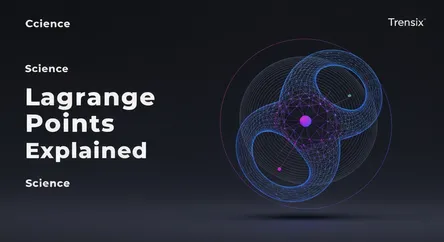Science
Lagrange Points Explained

Discover Lagrange points, the unique 'parking spots' in space where gravitational forces balance, making them ideal locations for telescopes like the JWST.
What is it?
Lagrange points are special locations where the gravitational pull of two large bodies, like the Sun and Earth, equals the centrifugal force felt by a smaller object. This creates a gravitational equilibrium, allowing the smaller object to maintain a fixed position relative to the larger bodies. There are five such points, labeled L1 to L5. An object placed at one of these points can orbit in lockstep with the larger bodies, making them cosmic "parking spots." L1, L2, and L3 lie on the line connecting the two masses, while L4 and L5 form equilateral triangles with them.
Why is it trending?
The James Webb Space Telescope (JWST) has brought Lagrange points into the spotlight. The JWST is positioned at the second Lagrange point (L2) of the Earth-Sun system, about 1.5 million kilometers from Earth. This location is ideal because it allows the telescope's sunshield to block heat and light from the Sun, Earth, and Moon simultaneously. This keeps the telescope exceptionally cold, which is vital for its sensitive infrared instruments. The stunning discoveries from JWST have highlighted the strategic importance of these unique orbital locations for modern astronomy.
How does it affect people?
These points are crucial for space exploration and science. They are ideal locations for satellites and observatories, requiring minimal fuel to maintain their orbits. This allows for long-term missions that provide continuous data on everything from solar weather, which can impact Earth's technology, to the origins of the universe. By enabling missions like JWST and the Solar and Heliospheric Observatory (SOHO), Lagrange points directly contribute to expanding human knowledge and our ability to monitor our cosmic environment, ultimately benefiting everyone on Earth through scientific advancement and discovery.